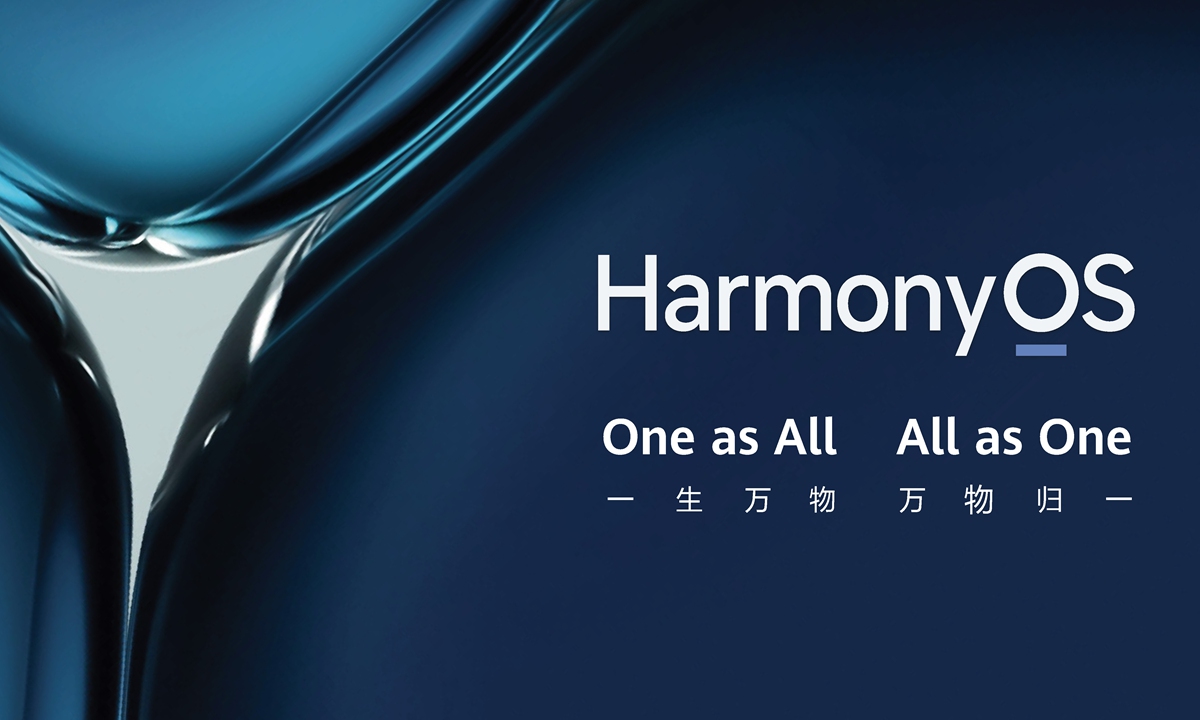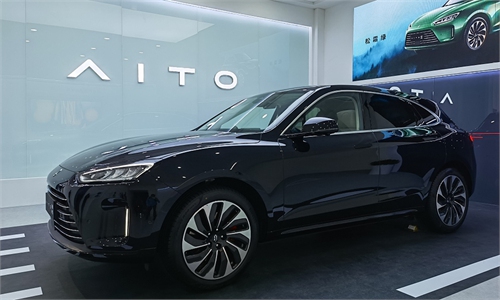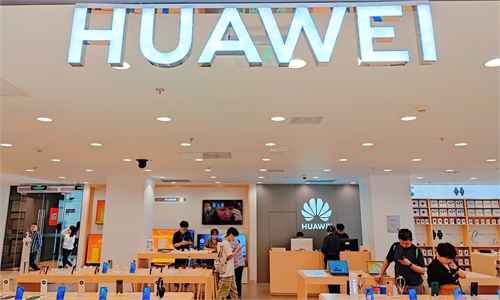
HarmonyOS
Chinese telecommunications giant Huawei is set to launch an updated version of its self-developed operating system (OS), the HarmonyOS 3.0, on July 27, putting the firm on the fast track to shake off reliance on Google's Android, while also paving the way for it to recover from a hobbled handset business amid years of the US' ruthless sanctions.
The launch date was released on Huawei's official Sina Weibo account on Monday. Describing the launch event as "future-oriented and a comprehensive evolution," Huawei said in the Weibo post that it will bring forth several other full-scenario terminal products during the event.
Since its release three years ago, HarmonyOS has continuously brought new functions and new experiences to consumers and has become the world's fastest-growing smart terminal operating system, Yu Chengdong, CEO of the consumer business group at Huawei, said on its Weibo account on Monday.
The "HyperTerminal" allows multiple devices to cooperate with and assist each other, and the control is simple and convenient… (it) allows services to be easily transferred across terminals, Yu said, noting that "the smooth performance makes the device easier to use, and the privacy and security protection makes everyone feel more at ease."
The 3.0 version is an update from the 2.0 version, which was launched in June last year. Since then, Huawei started rolling out HarmonyOS on selected smartphone models, offering users the chance to switch from the current OS based on Google's Android platform.
In April this year, Yu said that the number of Huawei mobile devices equipped with HarmonyOS had exceeded 240 million worldwide, and the number of devices equipped with HarmonyOS had exceeded 150 million, with more than 2,000 ecosystem partners.
"From the technical perspective of development of an operating system, progress is in line with expectations. But when it comes to a whole Harmony ecology, the breakthrough is limited, since other than Huawei itself, not many brands have adopted the system," a veteran industry analyst and close follower of Huawei told the Global Times on Monday.
The person, who asked to be anonymous, said that large companies may worry about being sanctioned by the US if using HarmonyOS. While for small firms, adopting the OS means an increase in costs since they have to specifically develop new apps for the system.
"Therefore, development of the OS still centers more around Huawei's own brand," said the analyst.
HarmonyOS was unveiled in 2019 as a "back-up" for Google's Android when the Chinese company was barred from using Google's services under a US government export ban. Research on the OS actually began in 2012.
While rather than being a "replacement," the company stressed the OS can also be deployed across multiple devices, including smartphones, computers and other electronic devices, which could also help it gain an early foothold in the era of the Internet of Things.
The company has also unveiled several new products using HarmonyOS, including a tablet, a smartwatch and a stylus in recent years.
Apart from its software dilemma, the firm is struggling with a chip ban, which has led to a major setback for its smartphone businesses. "The US ban is casting shadows on the firm, and it is still in a difficult period and is constantly looking for opportunities in new fields," Xiang Ligang, director-general of the Information Consumption Alliance, an industry association, told the Global Times on Monday.
But it hasn't given up, even in the most difficult chip part, Xiang said, noting that investment and research are still ongoing, with results expected to "come soon".
The company sees great potential in the coming era backed with its strength in 5G. During an industry conference the firm held in Shenzhen, Guangdong Province on Monday, Wang Tao, Huawei's managing director and president of ICT products and solutions, said that the firm sees "diversified and massive demand" in the future, as well as huge market opportunities.
Wang suggested that the industry should jointly discuss the next move toward the 5.5G era, continue industrial innovation, and work together to explore and develop new opportunities.


